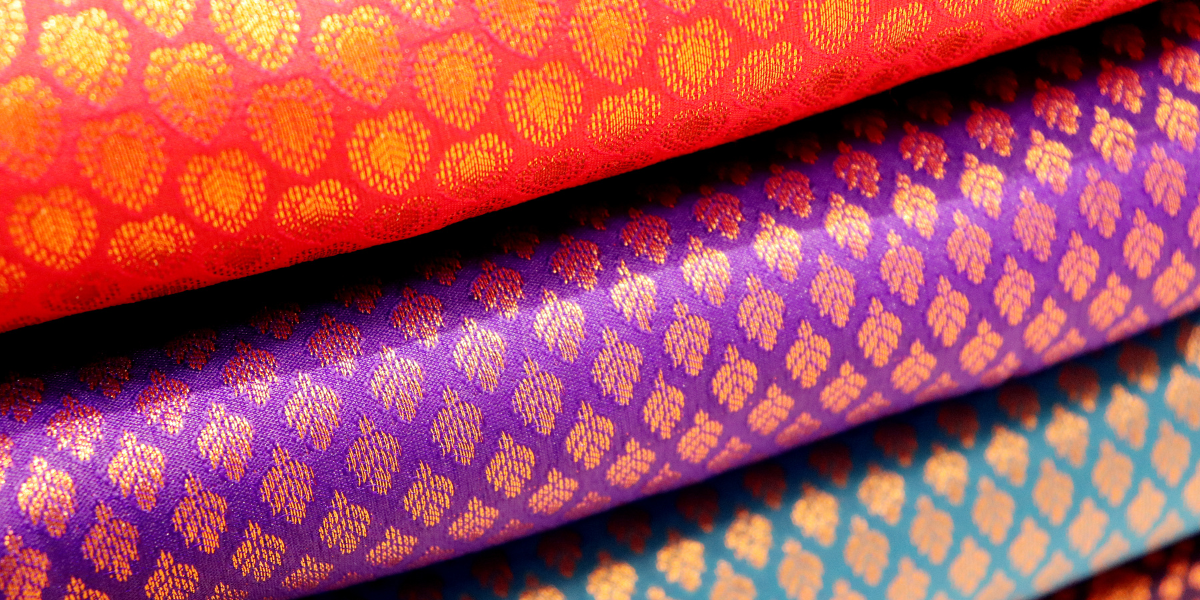
Silk sarees, Ahimsa sarees, and vegan sarees
Welcome to the colourful world of Indian fabrics and fashion!
Everyone knows that India has a long, rich history of textile production, with the saree as its crowning jewel. Renowned across the world for their beauty, women in India have been wearing sarees for thousands of years.
But what a lot of people don’t know is that while there is beauty and charm to sarees, silk sarees tell a very different story. As one of the most sought-after fabrics, silk sarees represent an ethical dilemma for vegans, Jains, or anyone who doesn’t want a living thing to suffer.
In this blog post, we will cover the basics of silk sarees and include some alternative fabrics, plus 5 vegan silk saree brands.
What is a saree?
A saree (also known as a sari or shari) is a traditional garment women wear in India and is considered the national dress of India. A saree is draped in a unique and elegant way, attached to the waist at one end and draped over the shoulder on the other side.

Interestingly, there is no stitching involved in this garment. The form and fitting of a saree comes uniquely from how it is draped.
While the saree is ubiquitous across India, each state has its own unique design, style, and techniques to make sarees. In fact, there are over 80 ways to drape a saree!
There is also a great diversity of fabrics used to create a saree, but it is believed that cotton was the first fabric used approximately six to seven thousand years ago.
Silk was first introduced much later, between 2450 BCE and 2000 BCE (4,471-4021 years ago.)
What is a saree made from?
Sarees are primarily made from cotton, silk, nylon, rayon, and polyester (this is a relatively new material).
There is a lot of tradition associated with a saree’s material, colour and design depending on the wearer’s traditions.
Everyone loves cotton, but silk has always been considered a luxury item and marker for success or wealth. A fabric seemingly like no other, they’re usually picked for special occasions like weddings, festivals, or other formal events.
But silk is expensive, and as we will shortly get into - cruel. The reason silk is expensive is because of how costly its production is. Silk farming requires a lot of resources and labour, which the consumer ends up paying for.
What is silk?
Silk is a natural fibre produced by the larvae of different species of silk moths - that’s right, they’re moths, not worms! The most commonly used silk is from the Bombyx mori moth.

For thousands of years, silk has been created to make items like clothing, bedding, and even parachutes.
How is silk made?
Today’s silk production techniques are based on a process that is thousands of years old, but it is not beautiful by any standard.
Silk farmers create an artificial environment for the female moths to lay their eggs, where they can hatch and become larvae. After 35 days of growing on a diet of mulberries, they’re at the point in their lifecycle to make their cocoons, so that they can transform into winged moths.

However, silk comes from the cocoons, so to harvest them, cocoons are treated with hot air, steam, boiling water, exposure to the sun, or gas in a process called stifling. This allows the threads to be loosened so workers can remove the undamaged silk threads.
Unfortunately, boiling is an important step of silk production because it blunts a natural substance called sericin, which would otherwise make the cocoons hard and result in silk that isn’t as soft.
Next, farmers unravel the cocoons to reveal one continuous string that can be stretched up to 900 metres long. Multiple pieces of these strings are entwined to create a silk thread, which can be woven into fabric.
Do silkworms die to make silk?
Yes, there is no getting around the fact that silkworms need to die to make silk.
As silkworms mature into adulthood, they naturally gnaw themselves out of their protective cocoons - which is what silk is made from and hence what producers are after. But to maintain the quality of silk fibres, farmers need to kill the worms inside to keep the cocoon fully intact. Killing the silkworms also makes the cocoon easier to unwind into one single, unbroken filament.
In fact, PETA estimates that around 10,000 silkworms are killed to make one silk saree.
Are silkworms killed for Ahimsa Silk?
Ahimsa silk (also known as peace silk or “vegan” silk) doesn’t involve boiling or gassing the silkworms inside their cocoons. Rather, they are allowed to emerge from their cocoons.
But is this better for the silkworms?
Although marketed as “cruelty-free,” Beauty Without Cruelty India investigated an “Ahimsa silk” operation and found cruel conditions and industry practices.
Female moths who have laid their eggs are crushed to death so that their bodies can be examined under a microscope for signs of diseases. If any disease is detected, the eggs are destroyed.
Male moths were seen stored in refrigerators to mate again and later disposed of after they’ve mated.
As stated earlier, the silkworms are permitted to completely come out of their cocoons to become moths. However, due to premature emergence and selective breeding, the moths have no way of surviving on their own. They come out with disabilities, are too large to even move, and as a result they perish.
Even if a moth can fully emerge, they will die because they will not be able to survive.
In conventional silk production, one moth dies per cocoon. In “Ahimsa Silk,” one moth also dies per cocoon as a result.
Can silkworms feel pain?
According to PETA India: “Although worms can’t show their distress in ways that humans easily recognise, anyone who has ever seen earthworms become startled when their dark homes are uncovered must acknowledge that worms are sensitive. They produce endorphins and have a physical response to pain.”

It’s not 100% clear if silkworms feel pain anywhere near the way that humans do, but if you want to avoid killing a living thing, silk is a good fabric to avoid.
Mahatma Gandhi criticised silk production and instead promoted cotton spinning machines based on the philosophy of Ahimsa. It is a shame that this idea ultimately led to the concept of Ahimsa silk, as there is no such thing.
Even if there were a magical way to produce real silk without harming the silkworms, there is no escaping the fact that silkworms were commoditised and exploited for their bodies.
Types of saree fabrics
Thanks to modern technology, there are many fabrics and materials to choose from that don’t involve killing animals:
1. Artificial silk. Artificial silk is a synthetic material that looks and feels like silk, but is instead made with rayon, cotton, and polyester. It’s airy, light, and beautiful!
2. Cotton. This one is easy, simple, comfortable, and widely available.
3. Crepe. Crepe used to be made with silk, but now it’s made from a variety of materials, like cotton, rayon, and chiffon.
4. Linen. Linen is made from the flax plant fibres. They’re an excellent choice for hot weather.
5. Lycra. A lycra saree is made with polyester and cotton. It's super stretchy, and super durable.
6. Satin. Traditionally made with silk, but synthetic versions of satin exist now.
7. Viscose. Viscose is made from tree wood pulp or bamboo.
8. Nylon. Nylon is strong and stretchy. It’s made from a type of plastic from crude oil.
9. Polyester. Polyester is a synthetic fibre, usually made from petroleum. Planet-friendly versions exist which can be made from recycled plastic, waste, and even crops.
10. Tencel. Tencel is an eco-friendly, natural fibre that comes from Eucalyptus trees.
11. Milkweed. Milkweed seed pods are silky and lightweight, and are a vegetable seed fibre.
12. Rayon. Rayon can be made from plants like bamboo, soy, cotton, and eucalyptus trees.

5 Vegan saree brands
1. JJV by JJ Valaya. JJ Valaya is an esteemed Indian fashion designer who has been recognised for launching an eco-friendly clothing collection made with TENCEL Luxe vegan silk, a material that looks and feels similar to silk.
2. Taneira. In 2022, Taneira launched a collection of vegan sarees that are lightweight and look very similar to silk.
3. Anita Dongre. Celebrity designer and vegan Anita Dongre’s brand offers beauty and glamour without the cruelty. Not only that, her brand supports the rehabilitation and sterilisation of 100 stray animals per month. It’s a great cause!
4. Hand N Yarns. Hand N Yarns is a vegan silk boutique based in Chennai. Imagine a whole collection of gorgeous clothing, all 100% cruelty-free! It’s a beautiful sight, and so are their sarees.
5. Kosigam. Kosigam makes vegan sarees from banana pith fibre from banana stems. Each saree is hand woven and designed with elegance in mind.
If you enjoyed reading this blog, please share it to get the message around!
What do I do with my silk sarees?
If you chose to go vegan and no longer want to use your old silk sarees, there are a few things you can do with them:
1. Donate or sell: You can donate or sell your silk sarees to someone who will use them. Many people are not vegan and would appreciate a saree.
2. Upcycle: You can upcycle your silk sarees into other clothing items like scarves, bags, or even pillow covers. You can give these away as gifts to family or friends in need.
3. Repurpose: If you have old silk sarees that are in poor condition or cannot be upcycled, you can repurpose them into household items such as curtains, tablecloths, or even wall hangings. Again, these can be given away as gifts or even sold.
4. Compost: If your silk sarees are too old or beyond repair, you can compost them. Silk is a natural material that can be composted.
If you enjoyed reading this blog, please share it to get the message around!

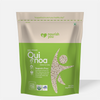
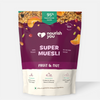
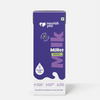
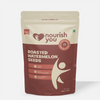
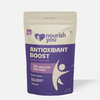
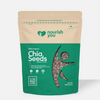
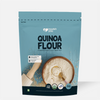
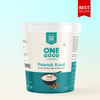
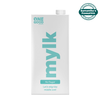
Comments
Leave a comment